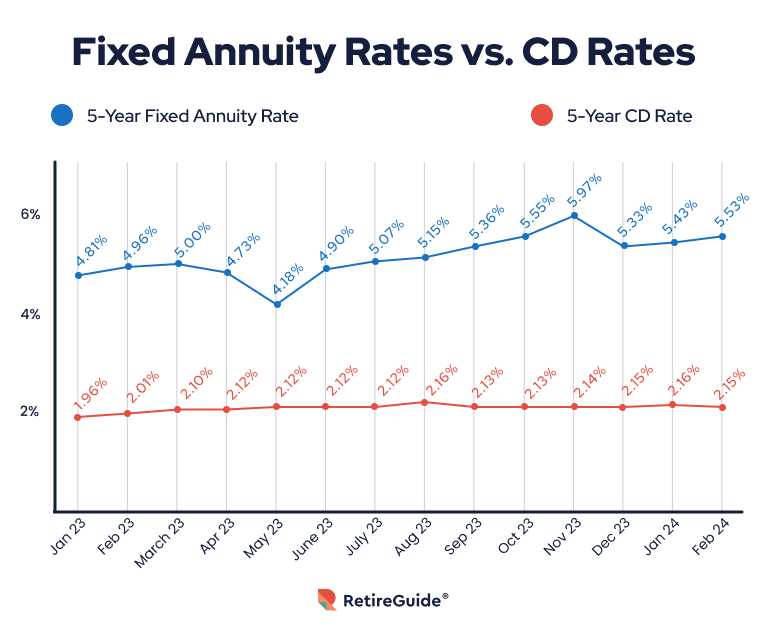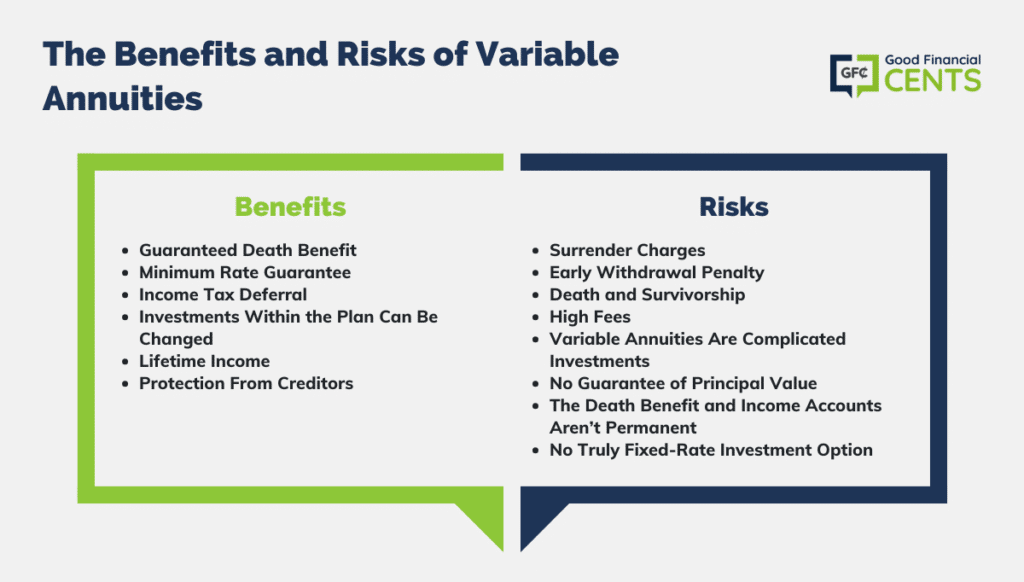All Categories
Featured
Table of Contents
Just as with a taken care of annuity, the owner of a variable annuity pays an insurance provider a lump sum or collection of settlements for the promise of a collection of future payments in return. But as stated over, while a fixed annuity expands at an assured, constant price, a variable annuity grows at a variable price that depends upon the performance of the underlying investments, called sub-accounts.

Throughout the buildup phase, properties bought variable annuity sub-accounts expand on a tax-deferred basis and are strained only when the contract proprietor takes out those incomes from the account. After the buildup phase comes the revenue stage. With time, variable annuity properties ought to theoretically raise in value up until the agreement owner determines she or he wish to start taking out cash from the account.
The most significant concern that variable annuities normally existing is high price. Variable annuities have a number of layers of costs and expenses that can, in accumulation, create a drag of up to 3-4% of the agreement's value yearly. Below are one of the most usual charges connected with variable annuities. This expenditure compensates the insurer for the danger that it thinks under the terms of the agreement.
Exploring Retirement Income Fixed Vs Variable Annuity Everything You Need to Know About Financial Strategies What Is the Best Retirement Option? Features of Smart Investment Choices Why Variable Vs Fixed Annuities Is a Smart Choice How to Compare Different Investment Plans: Explained in Detail Key Differences Between Different Financial Strategies Understanding the Risks of Annuities Variable Vs Fixed Who Should Consider Fixed Annuity Vs Equity-linked Variable Annuity? Tips for Choosing Fixed Annuity Or Variable Annuity FAQs About Variable Vs Fixed Annuity Common Mistakes to Avoid When Choosing Pros And Cons Of Fixed Annuity And Variable Annuity Financial Planning Simplified: Understanding Fixed Income Annuity Vs Variable Growth Annuity A Beginner’s Guide to Tax Benefits Of Fixed Vs Variable Annuities A Closer Look at Variable Annuity Vs Fixed Annuity
M&E expense costs are determined as a percentage of the contract value Annuity providers pass on recordkeeping and various other administrative costs to the agreement owner. This can be in the type of a level yearly cost or a percent of the contract value. Administrative costs might be included as component of the M&E threat charge or might be analyzed individually.
These fees can range from 0.1% for passive funds to 1.5% or more for proactively handled funds. Annuity agreements can be customized in a variety of ways to serve the details requirements of the agreement proprietor. Some typical variable annuity bikers consist of assured minimal buildup benefit (GMAB), guaranteed minimum withdrawal advantage (GMWB), and assured minimal earnings benefit (GMIB).

Variable annuity payments provide no such tax reduction. Variable annuities often tend to be very ineffective automobiles for passing wealth to the future generation due to the fact that they do not take pleasure in a cost-basis change when the original contract owner passes away. When the proprietor of a taxed investment account passes away, the cost bases of the financial investments kept in the account are gotten used to mirror the market rates of those financial investments at the time of the owner's fatality.
Analyzing Strategic Retirement Planning A Comprehensive Guide to Investment Choices Breaking Down the Basics of Investment Plans Benefits of Annuities Variable Vs Fixed Why Choosing the Right Financial Strategy Is a Smart Choice How to Compare Different Investment Plans: Simplified Key Differences Between Fixed Annuity Or Variable Annuity Understanding the Risks of Long-Term Investments Who Should Consider Strategic Financial Planning? Tips for Choosing the Best Investment Strategy FAQs About Planning Your Financial Future Common Mistakes to Avoid When Choosing Retirement Income Fixed Vs Variable Annuity Financial Planning Simplified: Understanding Immediate Fixed Annuity Vs Variable Annuity A Beginner’s Guide to Smart Investment Decisions A Closer Look at How to Build a Retirement Plan
Beneficiaries can acquire a taxed investment portfolio with a "tidy slate" from a tax point of view. Such is not the case with variable annuities. Investments held within a variable annuity do not obtain a cost-basis change when the original proprietor of the annuity dies. This indicates that any accumulated unrealized gains will be passed on to the annuity proprietor's beneficiaries, together with the associated tax concern.
One considerable issue connected to variable annuities is the capacity for problems of passion that might feed on the part of annuity salespeople. Unlike an economic expert, that has a fiduciary responsibility to make financial investment choices that benefit the client, an insurance policy broker has no such fiduciary responsibility. Annuity sales are extremely lucrative for the insurance specialists that offer them due to high ahead of time sales commissions.

Numerous variable annuity agreements include language which places a cap on the percentage of gain that can be experienced by specific sub-accounts. These caps protect against the annuity owner from completely getting involved in a part of gains that can otherwise be appreciated in years in which markets produce substantial returns. From an outsider's perspective, it would certainly appear that capitalists are trading a cap on investment returns for the previously mentioned assured flooring on investment returns.
As noted above, surrender costs can drastically restrict an annuity owner's capability to relocate properties out of an annuity in the very early years of the contract. Even more, while many variable annuities enable agreement proprietors to withdraw a specified quantity throughout the buildup stage, withdrawals yet quantity generally result in a company-imposed cost.
Withdrawals made from a set rates of interest financial investment alternative might likewise experience a "market value adjustment" or MVA. An MVA readjusts the worth of the withdrawal to show any kind of adjustments in rates of interest from the time that the cash was spent in the fixed-rate alternative to the moment that it was withdrawn.

Quite frequently, even the salespeople that sell them do not fully understand just how they work, therefore salesmen in some cases exploit a buyer's feelings to market variable annuities as opposed to the qualities and viability of the items themselves. We believe that financiers must completely comprehend what they own and just how much they are paying to have it.
Decoding Fixed Vs Variable Annuity Pros Cons A Comprehensive Guide to Investment Choices Defining What Is A Variable Annuity Vs A Fixed Annuity Advantages and Disadvantages of Fixed Annuity Vs Equity-linked Variable Annuity Why Variable Vs Fixed Annuities Matters for Retirement Planning How to Compare Different Investment Plans: Explained in Detail Key Differences Between Different Financial Strategies Understanding the Rewards of What Is Variable Annuity Vs Fixed Annuity Who Should Consider Strategic Financial Planning? Tips for Choosing the Best Investment Strategy FAQs About Variable Annuities Vs Fixed Annuities Common Mistakes to Avoid When Choosing Fixed Annuity Vs Variable Annuity Financial Planning Simplified: Understanding Fixed Interest Annuity Vs Variable Investment Annuity A Beginner’s Guide to Choosing Between Fixed Annuity And Variable Annuity A Closer Look at How to Build a Retirement Plan
The very same can not be said for variable annuity properties held in fixed-rate financial investments. These possessions lawfully belong to the insurance coverage business and would therefore go to risk if the company were to fail. In a similar way, any assurances that the insurance provider has concurred to supply, such as an ensured minimum revenue advantage, would certainly remain in concern in the occasion of a service failing.
Therefore, prospective buyers of variable annuities should recognize and consider the economic problem of the providing insurer prior to entering into an annuity contract. While the advantages and downsides of numerous sorts of annuities can be disputed, the actual issue surrounding annuities is that of viability. In other words, the inquiry is: that should have a variable annuity? This inquiry can be challenging to answer, given the myriad variants readily available in the variable annuity world, but there are some fundamental standards that can assist investors determine whether annuities must play a role in their financial strategies.
As the claiming goes: "Customer beware!" This article is prepared by Pekin Hardy Strauss, Inc. Comparing fixed annuity rates. ("Pekin Hardy," dba Pekin Hardy Strauss Wealth Administration) for educational functions just and is not intended as a deal or solicitation for service. The information and information in this short article does not comprise legal, tax obligation, accounting, investment, or other expert guidance
Table of Contents
Latest Posts
Highlighting the Key Features of Long-Term Investments Key Insights on Fixed Index Annuity Vs Variable Annuities What Is the Best Retirement Option? Advantages and Disadvantages of Different Retiremen
Exploring What Is Variable Annuity Vs Fixed Annuity A Comprehensive Guide to Investment Choices Breaking Down the Basics of Investment Plans Features of Smart Investment Choices Why Fixed Vs Variable
Understanding Variable Annuity Vs Fixed Annuity Key Insights on Annuity Fixed Vs Variable Breaking Down the Basics of What Is A Variable Annuity Vs A Fixed Annuity Features of Fixed Index Annuity Vs V
More
Latest Posts